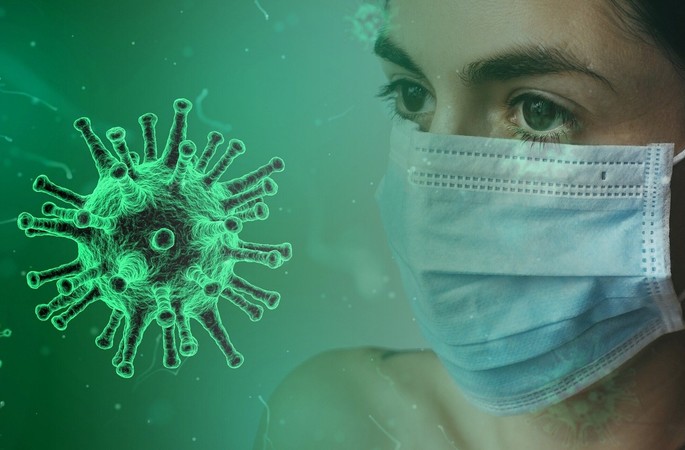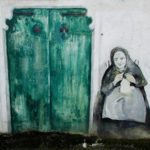World Health Organisation (WHO) was informed of a cluster of strange pneumonia by Wuhan Municipal Health Commission, China on 31.12.2019.
This disease was caused by a new strain of Coronavirus with rapid deterioration of patients requiring level 3 critical care support. It is related to a group of respiratory viruses. Some of these group of viruses presented as SARS, severe acute respiratory syndrome and MERS, middle east respiratory syndrome. The first report of coronavirus illness dates back to December 2019. The initial impression was that the virus originated from a live animal market in Wuhan by a process called zoonosis, where animal to human transmission occurs. This theory has now been disputed.
SARS was identified in Guangdong, China in 2002 and there were 8000 cases worldwide. It spread to 26 countries and the countries affected include Toronto in Canada, Hongkong, Taiwan Singapore and Vietnam. The severity of disease was variable and range from mild upper respiratory tract infection to pneumonitis requiring oxygen support or ventilation. Symptoms of SARS were fever, headache, malaise, myalgia, diarrhoea and rigours (shakes). There were numerous attempts at developing a vaccine by WHO and many other affected countries but none was successful.
The first outbreak of MERS (Middle East Respiratory Syndrome) was reported in Saudi Arabia in September 2012. This virus also belongs to Corona Virus family (Cov 1), and symptoms were similar to SARS and worst affected patients needing supplementary Oxygen Therapy or Ventilation. The first epidemic outside Arabian Penisula reported in the Republic of Korea thought to be related to travellers returning from Middle Eastern countries. Developing a vaccine was again proved to be unsuccessful, and there is no treatment.
World Health Organisation(WHO) decided that new Coronavirus disease should be called Covid 19 to avoid stigmata to country, region, area, and individual group of people in mid-February. Notwithstanding some politician continued to call it coronavirus or otherwise. Covid 19 is known to present with a multitude of symptoms similar to symptoms of SARS or MERS.
However, the triad of symptoms, high fever Temperature above 38 C, continuous dry cough and shortness of breath should lead to suspicion of Covid 19. In the middle of January 2020, few significant events were reported. The first case outside China was reported, and the second case was reported in Japan, followed by the first European case a few days later in France. More importantly protocol for RT-PCR assay was published by WHO.
There was concern about human to human transmission, first mentioned by a microbiology professor from Hongkong and on 19 January WHO confirmed human to human transmission, admitted by Chinese authorities a few days later.
Given this finding, risk s of exposure to covid 19 by front line healthcare workers in community, homecare and healthcare setting was appraised, and face coverings were recommended by the end of January. On 30 January major incident of Public health Emergency of International Concern (PHEIC)was declared by WHO.
Main modes of spread are by aerosol, droplets and touch. Initially, it was thought that virus could survive for up to 8 hours in the air and surfaces now scientists believe the virus can survive up to 3 days on metal and plastic surfaces.
On 11 March WHO declared Covid 19 is a pandemic. President Barrack Obama warned Americans and the world to prepare for viral Pandemic way back in 2014, wisdom rather than intelligence. Neither Americans nor the world heeded to his warning.
Asymptomatic carriers shedding viruses was recognised at the UN crisis meeting in the first week of April. While WHO were using all tools at their disposal to manage public health emergency unfolded, shortsighted actions during electioneering and other political and sporting events in major developed economies and developing countries, led the super spread of the virus.
WHO-China joint mission stressed that to reduce Covid 19 illness and death, near-term readiness planning must embrace the large scale implementation of high –quality, non-pharmaceutical public health measures. These include case detection and isolation, contact tracing, monitoring/quarantining and community engagement.
With an increasing number of new cases and death rates, acute hospitals in a health setting in major economies find it difficult to cope, and lockdown in major economies became inevitable.
To protect frontline workers in health settings and recognise there was a shortage of personal protective pieces of equipment (PPE), WHO issued guidelines for the use of PPEs and issued a call to increase manufacturing PPEs by 40% global demand in 1st week of April.
For the first time, the total number of Covid 19 cases worldwide exceeded 100,000 on 7 of March. At the time of writing, the total number of cases worldwide exceeded 62 million, and deaths exceeded 1.3 million. A few days later WHO declared Europe was the epicentre of Covid 19 with more cases and deaths than the rest of the world combined apart from people republic of China. For some inapparent reason incidence and death in South East Asia, namely, Taiwan, Singapore, South Korea, Thailand, Hongkong and Vietnam were far less than countries in temperate zones. The initial theory of high ambient temperature in south East Asian counties relevant to low prevalence, was later debunked.
The economic impact of lockdown on businesses and employment was massive, and some small businesses were heading for bankruptcy. Daily wage earners and people with short term employment contracts were in serious difficulties. There were relief measures available in various countries.
British Government introduced the furlough scheme where the treasury paid 80% of the salary. The scheme was to be terminated by the end of October, but due to the introduction of fixed 2nd lockdown, the scheme is to continue to the new year. In the United States, millions of people applied for unemployment and social benefits. Global Humanitarian Response plan for $6.7 billion was launched by the United Nations for low and middle-income countries, on 7 May.
Covid 19 has no boundaries, and several key figures in the British Government, European Union, Brazil and even President Of United States contracted it, the latter part of Election Campaign. The world was crying out for an antiviral drug and vaccine. Mis and disinformation were rampant in social media.
Astonishingly. There were guidelines written for the treatment of covid 19 based on rather a small cohort of 19 patients, recommending the use of hydroxychloroquine and azithromycin. This was reaffirmed by another academic claimed to be a professor of pharmacology. Some people who owned Youtube channels wrote their own unscientific views and herbal treatment for a virus spreading rapidly with tens of thousands of daily deaths.
To counteract infodemics, WHO launched health alert on Whatsapp in multiple languages with uses worldwide, giving instant, accurate information about Covid 19. Realising the harmful effects of misinformation to the public and communities, they also launched Facebook Messenger CHATBOT version of its health Alert platform. Infodemiology is the science of managing overabundance of
Information, some accurate and some not, occurring during epidemics.
Infodemics was of unimaginable scale and need for randamised control trials could not be overemphasised. On 18 March WHO announced Solidarity trial. On the same time line two other clinical trials namely Recovery trial and DisCoVeRy trial were launched.
Purpose of these trial is to accelerate the process of design and conduct, rapid worldwide comparison of unproved treatment and to overcome the risk of multiple small trials not generating the strong evidence needed to determine the relative effectiveness of potential treatment.
The following existing drugs are being tested on, in hospitalised patients who are sick or requiring oxygen therapy, in these randomised trials but with variation in different arms.
Low dose dexamethasone
Hydroxychloroquine
Azithromycin
Tocilizumab (an anti-inflammatory drug)
REGN-Cov 2 (monoclonal antibody)
Convalescent plasma
Aspirin
Lopinavir/Retrovir
There were no recruitment problems into these trials, but of note in South East Asia, only Thailand enrolled in the solidarity trial. Other countries participating in multicentre solidarity trial are Argentina, Bahrain, Canada, France, Iran, Norway, South Africa, Spain and Switzerland. Interim results of recovery trial were reported in mid-June.
Low dose dexamethasone reduced deaths by a third in ventilated patients and by a fifth among patients receiving oxygen therapy only. Much acclaimed Hydroxychloroquine did not affect Covid 19 and discontinued from Solidarity trial. Lopinavir-Ritonavir arm revealed no clinical benefit and discontinued from trials by the end of June.
On the other hand, Remdeseavir, antiviral drugs effective against Ebola was shown to shorten the duration of illness by 4 days. It is a nucleotide analogue which inhibits the enzyme, RNA polymerase in viral particles. As readers have alluded to most of these drugs were given to a political leader of Major democracy, irrespective of clinical evidence.
We are into the 11th month since Covid-19 invaded our Planet yet there is no effective antiviral drug despite some Ayurvedic physicians and a misguided professor claiming they have the remedy in the form of a herbal elixir, for the disease. If proven undoubtedly, they would be Noble Prize winners, but the Noble Prize committee will not accept unscientific statistically unvalidated evidence. Messages coming from gods does not hold water in scientific practice!
Status of Vaccine
Development of a vaccine usually takes years. Currently, there are 198 vaccine developers around the globe. There are 6, vaccine developers, in collaboration with Pharmaceutical giants and universities, made the headway. They are Pfizer -Biontec, Moderna already reported phase 3 results with 95% efficacy, awaiting approval by regulatory authorities in different countries, FDA in USA and MHRA in the UK. In association with Astra-Zeneca, the Oxford group reported promising Phase 2 results, i.e., the good immunological response in people above 60.
Results of Phase 3 trial conducted in the UK, America, Brazil and South Africa. Results of Phase 3 trial which enrolled 24,000 people, had been reported with efficacy varying from 70-90%. An important feature of Astra-Zeneca vaccine is significantly low cost and storage facility in an ordinary fridge at c 4degrees Celsius. Other key players in the forefront are Jansson, Imperial College and the University of Southampton.
An important feature of this new vaccine is they are not based on the attenuated virus but spike proteins or mRNA. Hence there should be no fear in contracting the disease following vaccination. Two injections of coronavac made by Sinovac (otherwise known as Beijing Kexing Bioproducts) cost 2000 rmb ($300) at the private Taihe Hospital in the Chinese capital. The vaccine still has not passed the final stage 3 clinical trial but is already being offered to the public on a first-come-first-served basis. It is not just the coronaVAc vaccine on offer in China. An unofficial vaccine rollout is gathering pace despite the warning of international public health experts.
COVAX Facility
Rich Western Democracies have ordered millions of doses of vaccine through their Vaccine Task Forces. For instance, Britain has ordered 100 million doses from 4 different manufactures. Low income and fragile countries must have fair access to the vaccine. COVAX facility is a mechanism designed to guarantee fair and equitable access to vaccines and distribution.
Thanks to the United Nations and they agreed to release $10.3 billion to fight the virus in low income and fragile countries. However, this facility should not be misread and expect whole populations of developing countries to be vaccinated WHO. WHO and the United Nations are not bottomless pits and funded by developed countries.
It is understood that the WHO will provide a Vaccine for 20% of low-income and fragile countries. For the rest of the population of those countries, Vaccines have to be purchased. Astra-Zeneca has confirmed that they are not expecting to make a profit by selling vaccines to developing countries.
Well into the 11months of this pandemic there appear to be light at the end of the tunnel. Scientists and Vaccinologists have burned the midnight oil and worked 7days a week to bring about a successful vaccine. This does not mean public and communities drop their guard and be complacent. All important space, face-covering and hand hygiene and vigilance must be maintained for some time to come.
At the time of writing one person is dying from Covid 19 every 17second. Mass gathering for political reasons, national celebrations, religious festivals, and sporting events must be avoided. By and large lots of countries use invaluable services of the armed forces to control the pandemic.
However, they can not lead the process, strategies, and modelling developed by the Epidemiologist, virologists, and scientists. It remains to be seen if life will ever be returned to what we used to knew and enjoy.



